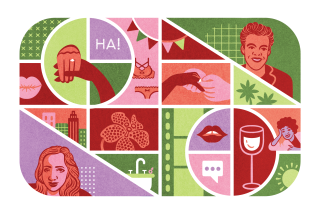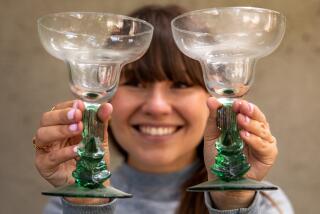The secrets of snagging a gem of a bargain
Buying jewelry has never been a mystery to me. Someone in my family has always known someone in the industry who has been able to guarantee a good price, excellent advice and plenty of hand-holding.
When I was growing up outside of Chicago, my parents went to see an old friend, a diamond wholesaler named Bea. (She had the amusing fortune of marrying a man with the surname Lowe, giving Bea the funniest name my 7-year-old self had ever heard and the reason I remember her to this day.) Here in Los Angeles, my husband and I rely on a family acquaintance who works in a nondescript building in the downtown Jewelry District.
To get to his office, a light-filled room only slightly larger than the three desks it holds, we first have to buzz and announce ourselves from the hallway. After entering, we wait in a tiny foyer with a receptionist window made of bulletproof glass and another security door; the doors are fixed so that one won’t open until the other closes.
Inside, our friend shows us his stash, displaying precious stones on a plain white mat as if they were pebbles, offering a special tweezer-like grabber if we want to pick one up and hold it to an ear or decolletage. If we find something we like, he pops it into a machine that spits out the diamond’s “map” -- a visual representation of the stone’s flaws, dimensions, etc. -- and a detailed assessment of its quality. If we decide to make a purchase, we definitely do not pay retail.
We’re lucky. Most people don’t have an inside connection. So what’s an ordinary shopper to do?
Listen to John, as I’ll call my friend. He knows the secrets, and is willing to share the big ones.
* Don’t fret about all four C’s -- cut is by far the most important. Going to a diamond merchant, in fact, is like going to a butcher. “You’re buying weight when you buy a diamond,” John says. “The cut is how much fat is on the diamond.”
Excess fat, like on a cut of meat, will bring the price up. And fat on a diamond actually detracts from the value of the stone, he says. A diamond is a prism, and any cut graded less than “ideal” or “very good” lets light escape from the bottom or side, he says, detracting from the fire and brilliance seen from the sparkling top.
For the size-is-everything crowd, he acknowledges, excess fat doesn’t matter. The fat that should bring down the price of a diamond also might make it look bigger, even if it won’t look as good. “As long as you know and are happy about it, good for you,” he says. “Just don’t tell me it’s the best money can buy.”
* Never buy a diamond that is already set in a ring and don’t spend more than 10% to 15% of the value of the stone on the piece of jewelry into which the stone will go.
* Walk out of a store that refuses to send a diamond to the Gemological Institute of America or the American Gem Society for certification that you’re buying what you think you’re buying. The GIA or AGS will inscribe the stone with a tiny identification number, visible with a jeweler’s loupe, proving the diamond and the papers going with it match. This will set you back about $125 -- and be worth it.
* Ditto a store that won’t let you see the Rapaport Diamond Report, a weekly listing of wholesale prices based on size, color and clarity. Jewelers aren’t supposed to photocopy the Rap, as it’s known, but even the report’s founder, Martin Rapaport, says they can show it to customers. (Caution: Some experts say the report doesn’t include all the information needed to determine a wholesale price, and can be confusing to a lay person.)
“When you walk out of your jeweler’s,” John says, “you want to feel a certain level of comfort.”
More to Read
Inside the business of entertainment
The Wide Shot brings you news, analysis and insights on everything from streaming wars to production — and what it all means for the future.
You may occasionally receive promotional content from the Los Angeles Times.










